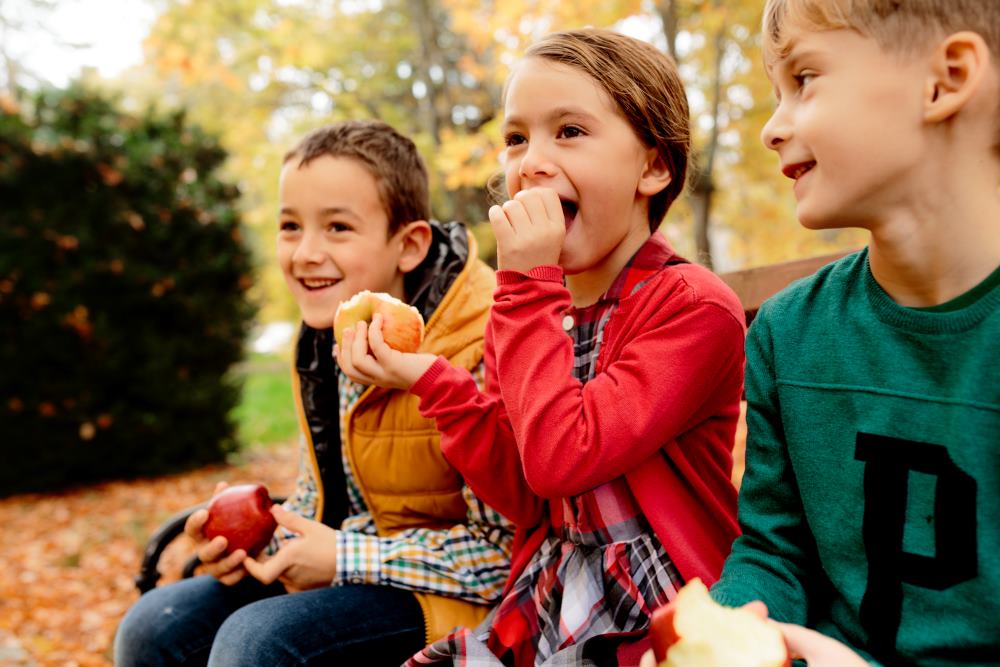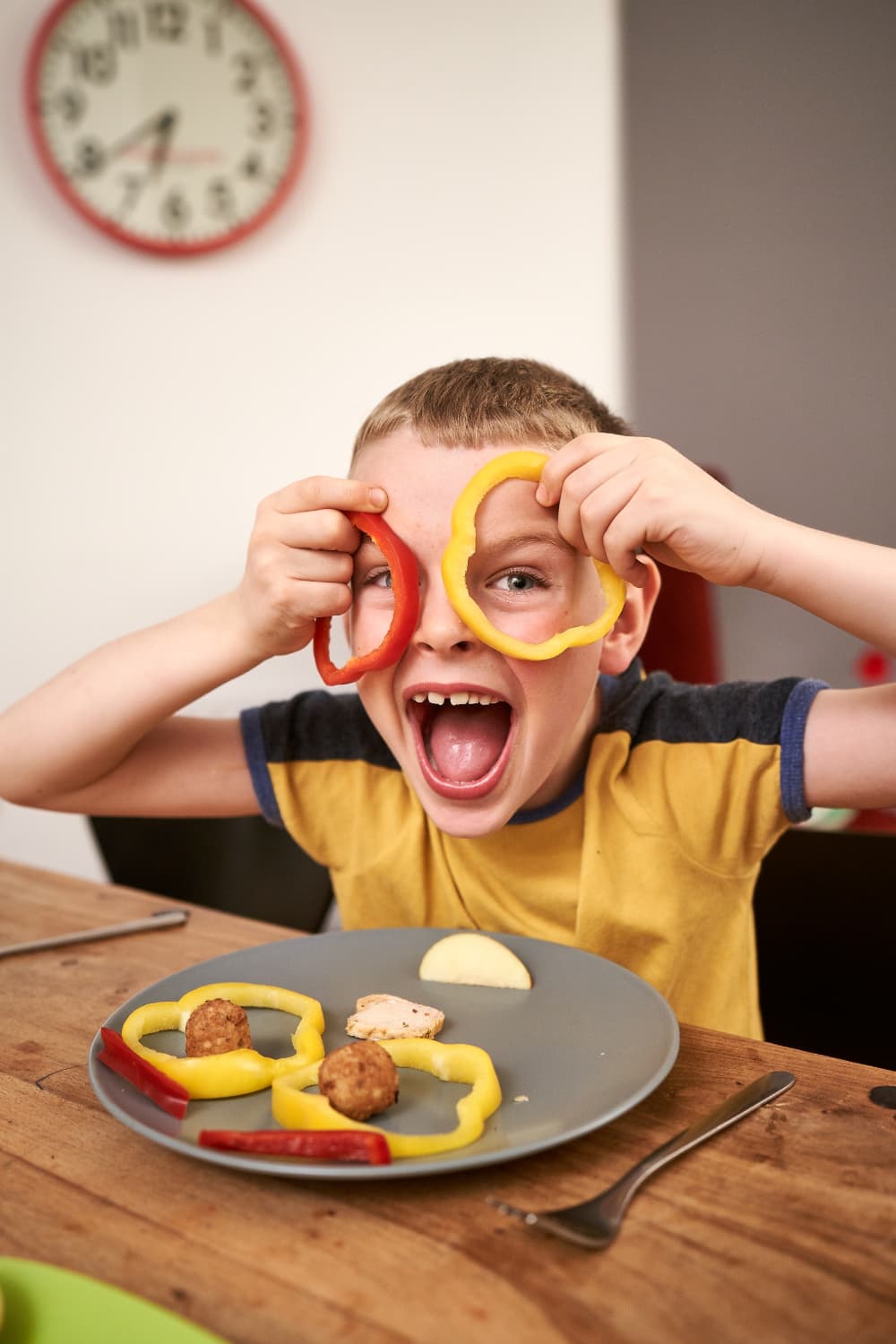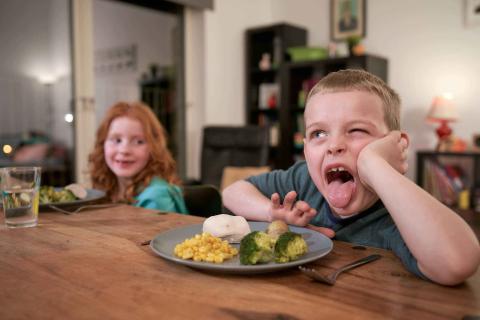Kids love to snack. The cries of "I'm starving, what can I eat now?!" are all too familiar for most parents. The problem is that many snacks can be full of saturated fat, salt and sugar. Eating too much of these over time can lead to serious health problems, so it's important to have healthy alternatives to hand when your wee one comes along demanding crisps and chocolate.
We've got some great ideas for quick, low-cost healthy snacks for busy families. When you're out and about our snack heroes will help fight hunger, or if you're looking for an after school nibble why not try one of our snack recipes? Making a few weekly changes can help keep your kids happy and healthy.
Snack recipes
These quick and tasty snacks are great to grab on the go, or to give to kids after school. You can also make snacking more fun by preparing food together. Hopefully it will take their mind off being hungry for a wee while, while getting them to try something new.
After school snack ideas
Fruit Tricks
- Give your kids pieces of apple, melon, strawberries, orange, whatever's in the kitchen. Look out for fruit that's in season, it's likely to be cheaper.
- Serve it in a bowl as a fruit pick 'n' mix, or on a skewer as a fruit kebab.
Sweet Treats
- If you're having a pudding, try sugar-free yoghurt or sugar-free jelly.
- Freeze a banana and mash it up. It's just like ice cream!
Chips & Dips
- Toasted wraps or pitta and lower fat dips like salsa, low fat yogurt or reduced-fat hummus make a tasty snack.
- Try unsalted oatcakes or crackers topped with low fat cheddar.
- Cucumber, carrot or pepper sticks with a low fat dip are easy to make and fun to eat.
Lunch box snacks
Adding veggies to your child’s packed lunch is a great way of ensuring they get their 5 a day – but will they eat them? Here are a few ideas that might entice them:
- Children often prefer uncooked or raw veg as it is sweeter, crunchier and more colourful. It’s also easier for you to prepare – win win!
- Include a handful of raw snack veg like carrots, peppers and celery in their lunch box. It may go down better if you pack some low fat dip as well, like hummus or cream cheese.
- Make veg fun by threading chopped peppers, mushrooms, cherry tomatoes, radishes, cubed cucumber or beetroot onto a lolly stick or skewer. Yum!
You can find more healthy tips on the Veg Power website.
It's important to remember this is just one part of your child’s lunchbox and should be considered alongside other healthy food groups as part of a balanced meal.
Top snacking tips and tricks
Tip #1: 'Saving money' snacks
Sometimes things branded as 'kiddy snacks' with bright colours and pictures can be more expensive, even though they're no different from adult versions. By reading the labels and checking the prices, you can save yourself some money. For example, don't bother with the little 'kid-sized' packs of raisins. Just buy a bigger packet and separate into smaller portions yourself!
Own-brand items are often just as good as branded and much cheaper.
Tip #2: Look at your portion size
Because bigger sizes are cheaper and usually on offer, we often end up buying and eating much more than we need.
When kids ask for a snack, don't let them help themselves from the bag/packet. If they say they're still hungry, offer them fruit or plain popcorn. Instead of a whole bag of crisps, try putting just a handful from the bag in the bowl.
Tip #3: Check the labels
When you're out and about, compare different products to find foods lower in fat, saturated fat, sugar and salt.
For a healthier choice, try to go for snacks with green and amber labels nutrition labels, and avoid red as much as possible.
Tip #4: Think about the drink
Fizzy drinks make up a quarter of children's free sugar intake. Why not try swapping fizzy juice for pasteurised whole or semi-skimmed cows', goats’ or sheep’s milk? Or just give them water! Making the switch to milk or water gradually over a few weeks will help your kids get used to having less sugar in their drinks.
Tip #5: Quench thirst first
Sometimes kids think they're hungry when actually they’re thirsty. So make sure to offer them water or milk regularly throughout the day. Children's main drink should be water, pasteurised whole or semi-skimmed cows', goats’ or sheep’s milk or water. We all need to drink around 6-8 glasses of fluid every day.
Tip #6: Avoid sweet treats outside of mealtimes
It’s better for your teeth to eat healthy sweet treats like dried fruit, banana bread or a fruit flapjack as a pudding at meal times. So try to avoid snacks like these in between meals and stick to fruit and savoury snacks instead.
Here are some tasty, ‘tooth-friendly’ snack recipes recommended by Childsmile:
Tip #7: Swerve salty snacks
Did you know that too much salt can cause kidney damage and lead to high blood pressure? On average, children aged 1 to 3 years should aim to have no more than 2g of salt per day, and children aged 4-6 years no more than 3g of salt per day. So avoid adding salt to your child's food, or giving them salty snacks like crisps.
 Activities & Play
Activities & Play Behaviour
Behaviour Childcare
Childcare Development & Growing Up
Development & Growing Up Family, Friends & Relationships
Family, Friends & Relationships Feeding Your Baby
Feeding Your Baby Food & Eating
Food & Eating Health & Safety
Health & Safety Mental Health & Wellbeing
Mental Health & Wellbeing Money & Work
Money & Work Online Behaviour & Safety
Online Behaviour & Safety Pregnancy & First Days
Pregnancy & First Days School & Education
School & Education Sleep
Sleep








 Behaviour
Behaviour
 Activities & Play
Activities & Play